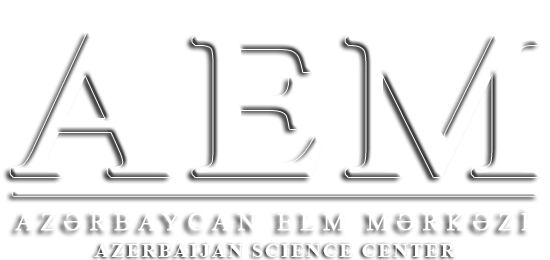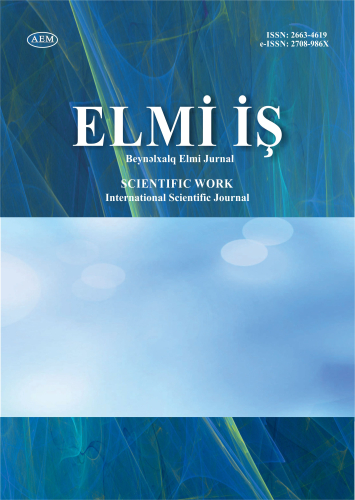DOI: https://doi.org/10.36719/2663-4619/87/34-45
Namaz Puti Yusubov
Ministry of Science and Education
Institute of Oil and Gas
Doctor of Geological and Mineralogical Sciences
FACTORS FOR THE OCCURRENCE OF SMALL-FOCUS EARTHQUAKES
IN THE MIDDLE AND LOWER KURA DEPRESSIONS
Abstract
The hypocenters of the earthquakes that occurred in the Kura depression are confined to the zones of its junction with the surrounding mountain structures of the Lesser Caucasus and the Greater Caucasus, where tectonic faults with complex properties are developed. At the same time, a significant part of earthquakes occur in zones where there are no breaks in the Earth's crust, and these events are not accompanied by ripping of the earth's surface.
According to the results of the structural interpretation of seismic data, it has been shown that there are no tectonic faults in the inner areas of the Kura depression, which are involved in the process of releasing elastic energy (stress) created as a result of the convergence of the Eurasian and Arabian lithospheric plates. It is shown that almost half of the total number of small focus earthquakes within the territory under consideration arise as a result of multidirectional spatial movement of blocks of a heterogeneous base (foundation) without provoking ruptures in the upper plastic geological medium and the Earth's surface. In some zones, such earthquakes also occur in the inner part of the Mesozoic stage of the geological section, which is also characterized by a heterogeneous structure. It is shown that some of the earthquake sources in the territory under consideration are formed as a result of thrusting of one mass onto another along planes that have a subhorizontal direction. Such processes occur in the Cenozoic interval of the earth's crust. It is shown that most of the discovered deposits in the territory covered by this study are associated with reservoirs created by paleo-river arteries and have no connection with tectonic faults. Thus, assumptions about the formation of hydrocarbon deposits with the participation of tectonic faults are not confirmed by the results of interpretation of seismic data. The studies were carried out with a joint integrated analysis of seismic data carried out in the period from 1993 to 2019 and seismological observations since 2003 to 2019.
Keywords: earthquake focus, hypocenter, epicenter, reflected wave method, shallow-focus earthquakes, tectonic breaks
Namaz Puti oğlu Yusubov
Elm və Təhsil Nazirliyi Neft və Qaz İnstitutu
geologiya-mineralogiya elmləri doktoru
nyusubov@gmali.com
Orta və Aşağı Kür çökəkliklərində kiçik fokuslu zəlzələlərin
baş vermə səbəbləri
Xülasə
Kür çökəkliyində qeydə alınan zəlzələlərin hiposentrləri onun Kiçik və Böyük Qafqazın dağları ilə təmaslarındakı mürəkkəb xassələrə malik tektonik qırılmaların inkişaf etdiyi zonalarda baş verir. Eyni zamanda buradakı zəlzələ ocaqlarının əhəmiyyətli hissəsi yer qabığında qırılmaların olmadığı depressiya zonalarında baş verir və bu hadisələr yer səthində yarılmalarla müşayiət olunmur.
Seysmik məlumatların geoloji interpretasiyasının nəticələri Avrasiya və Ərəbistan tavalarının qarşılıqlı təsirindən Kür çökəkliyinin daxilində yaranan elastik enerjinin (gərginliyin) boşalması prosesində (relaksasiya) iştirak edən tektonik qırılmaların olmadığını göstərir. Məqalədə göstərilir ki, baxılan ərazi daxilində kiçik fokuslu zəlzələlərin ümumi sayının demək olar ki, yarısı üst elastik (plastic) geoloji mühitdə və Yer səthində qırılmalara səbəb olmadan heterogen təməlin (bünövrənin) bloklarının çoxistiqamətli məkan hərəkətləri nəticəsində yaranır. Bəzi zonalarda bu cür zəlzələlər həm də heterogen strukturu ilə xarakterizə olunan geoloji kəsilişin mezozoy mərtəbəsinin daxili hissəsində də baş verir. Göstərilmişdir ki, nəzərdən keçirilən ərazidə zəlzələ mənbələrinin bir hissəsi subhorizontal istiqamətli layların (müstəvilər) səthilə bir kütlənin digərinin üzərində yerdəyişmələri (üfüqi sıxılma nəticəsində) nəticəsində əmələ gəlir. Belə proseslər daha çox yer qabığının kaynozoy intervalında baş verir. Tədqiqatın nəticələri Kür çökəkliyindəki yataqların yaranmasında tektonik qırılmaların iştirak etmədiyini göstərmişdir. Burada aşkar edilmiş yataqlar ana süxurlarda əmələ gələn karbohidrogen flüidlərinin elə laydaxili miqrasiya vasitəsilə rezervuarlarda toplanması nəticəsində yarandığını vurğulayır. Tədqiqatlar 1993-cü ildən 2019-cu ilə qədər aparılan seysmik məlumatların və 2003-cü ildən 2019-cu ilə qədər aparılan seysmoloji müşahidələrin kompleks təhlili ilə aparılıb.
Açar sözlər: zəlzələ ocağı, hiposentr, əks olunan dalğa üsulu, dayaz fokuslu zəlzələlər, tektonik qırılmalar

